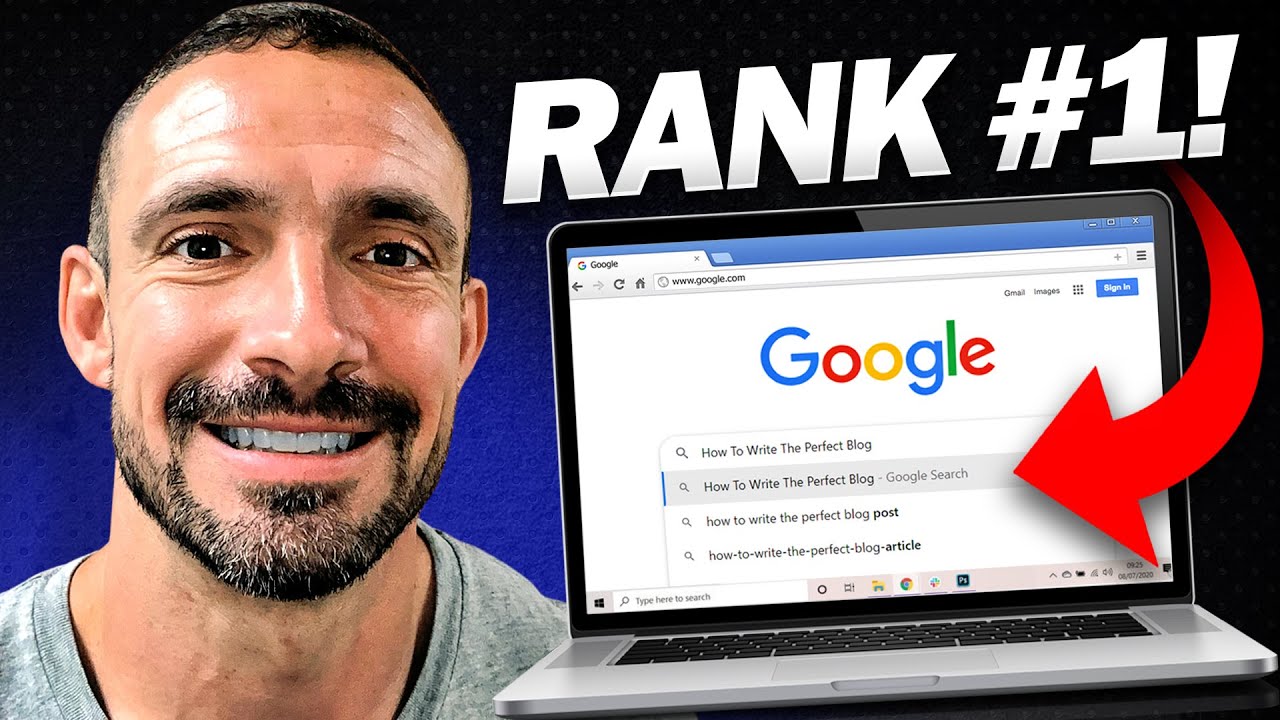Are you struggling to get your blog post to rank on Google’s first page? In the video “How to Write the Perfect Blog Post for 1st Page Google Search” by Searchific, you’ll discover why a well-written post alone may not be enough for top-tier ranking. This video dives deep into the key factor that determines first page ranking: authority. With insights from the experienced SEO practitioner, Greg, you’ll learn how to optimize your blog post and establish the necessary authority to achieve high rankings. By analyzing examples and providing guidance on headlines, structure, and formatting, Greg unveils the secrets to writing the perfect blog post for Google’s first page ranking. So, if you’re ready to unlock the secret and boost your blog’s visibility, make sure to watch the full video now.
The Importance of Authority
Authority plays a crucial role in ranking your blog post on Google’s first page. It is not just about writing a great post but also establishing your authority in the subject matter. In this article, we will explore the importance of authority, debunk popular myths, and provide SEO insights to help you write and optimize a blog post that can achieve a high ranking on Google.
Establishing authority
Establishing authority is essential to increase the visibility and credibility of your blog post. The more authority you have, the more likely it is for your post to rank higher on search engines. One key factor in determining authority is the number of referring domains that link back to your website. The higher the number of referring domains, the higher your authority is likely to be.
Debunking popular myths
There are various myths surrounding the concept of writing the perfect blog post. One of the most common myths is that writing a perfectly crafted post is enough to rank it on Google’s first page. However, this is not entirely true. While a well-written post is important, having authority is equally crucial. Without authority, even the most perfectly written blog post may not receive the visibility it deserves.
SEO insights
Years of experience in the field of SEO have provided valuable insights into optimizing a blog post for a high ranking on Google. While individuals like Neil Patel may have high authority websites that can easily rank their content, the average viewer may not have such resources. Hence, it is essential to focus on writing a well-structured blog post that aligns with your level of authority.
Understanding and Analyzing Authority
To understand and analyze authority, it is important to consider the role of referring domains. Referring domains are other websites that link back to your website. The more referring domains you have, the more authority your website holds. Neil Patel is an excellent example of someone with a high authority website. With 150,000 referring domains, he can easily rank his content.
However, for those who don’t have a super authority site like Neil Patel, it is crucial to align their blog post with their level of authority. This means focusing on creating a well-structured post that is optimized for search engines.

Analyzing Competing Websites
To analyze the authority and word count of competing websites, let’s take an example of pickleball drop shot drills. By analyzing the authority and word count of these websites, we can gain insights into what it takes to rank for this specific keyword.
For example, Pickleball University has 347 referring domains, with one referring domain going to the actual page that is ranking. Similarly, The Pickleball Player has 125 referring domains with zero going to the ranked page. This indicates that with a relatively lower number of referring domains, it is still possible to rank on the first page for this keyword.
This analysis emphasizes the importance of understanding authority and analyzing the competition when crafting a blog post.
Matching Word Count of Top-Ranking Websites
Word count is another important factor to consider when aiming for a high-ranking blog post. By examining the word count of top-ranking websites, we can get an idea of how our blog post should be structured.
Using top-ranking websites as a template can provide valuable guidance. For example, Masterclass.com has a word count of 6,000 for their page ranking for the keyword “how to write the perfect blog post.” Word Stream, HubSpot, and Block Tiring also have significant word counts.
By matching the word count of similar authority websites on the first page of search results, you can increase your chances of ranking higher.
Creating headlines
Headlines play a crucial role in attracting readers to your blog post. Analyze the headlines of top-ranking websites and use them as inspiration for creating catchy and engaging titles for your own post. Remember to incorporate relevant keywords into your headlines to optimize your post for search engines.
Structuring the blog post
Structuring your blog post is essential for readability and user experience. By examining the structure of top-ranking websites, you can learn how to divide your content into sections and subsections. This can include introductory paragraphs, bullet points, numbered lists, and subsections that address specific aspects of the topic.
Formatting for Improved Appearance
Formatting your blog post is vital for improving its overall appearance and readability. A well-formatted post is more likely to attract readers and keep them engaged. Here are some formatting tips to consider:
Importance of formatting
Formatting your post using proper headings, subheadings, and paragraphs helps break up the text and makes it easier to read. It also improves the overall flow of information.
Utilizing H tags
Utilize H tags (H1, H2, H3, etc.) to structure your content and make it more scannable for readers and search engines. Use H1 for the main title, H2 for subheadings, and H3 for subsections within the subheadings.
Bullet points and numbered lists
Using bullet points and numbered lists can help highlight key points and make your content more visually appealing. They also make it easier for readers to digest information.
Incorporating various types of content
Incorporating different types of content, such as images, videos, and infographics, can make your blog post more engaging and visually appealing. Visual content breaks up the text and provides additional value to the reader.
Conclusion
Writing the perfect blog post requires more than just well-crafted content. It is essential to understand the importance of authority and how it impacts your post’s ranking. While a perfectly written blog post is crucial, having sufficient authority is equally important.
Analyzing authority, matching the word count of top-ranking websites, and formatting your content for improved appearance are key steps in creating a successful blog post. By following these strategies, you can increase your chances of ranking higher on Google’s first page and attract more readers to your blog. Remember, authority and well-structured content go hand-in-hand in achieving top-tier ranking on search engines.
